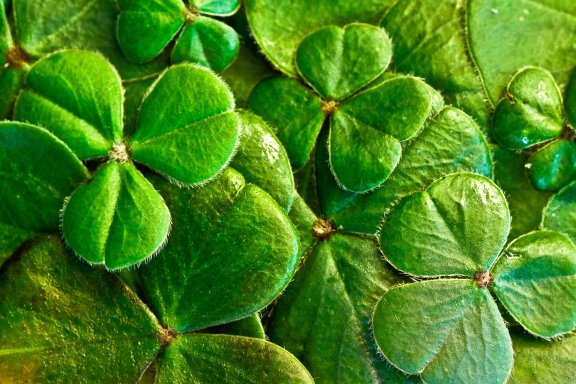Stump Your Family and Friends With Fun and Fascinating St. Patrick's Day Trivia

We all know about the color green being synonymous with St. Patrick's Day in honor of Ireland (aka the Emerald Isle), but what about other traditions observed and information about March 17th? For example, was there a real Saint Patrick, and did he actually drive the snakes out of this European country? Let's take a closer look at this red-letter date celebrated annually when everyone is at least a little bit Irish for the day.
The Man, Not a Myth, and a Legend
Devout Catholics are likely aware St. Patrick is the actual patron Saint of Ireland itself and was credited with bringing Christianity to this country according to historians. It's said that during ancient times the Saint of the Emerald Isle miraculously forced all the snakes and serpents to slither into the sea, but science doesn't support this as anything more than a legend since:
- Research suggests there were never snakes in Ireland
- There is no fossil evidence found of these reptiles from any part of this region
- Surrounded by water since the last glacial period, the area was too cold for these creatures
Naughty or Nice? The Leprechaun Connection
It's almost common knowledge we often associate mischievous little red-haired, leprechauns dressed in green with St. Paddy's Day but it's a little more complicated than that on the surface. It's believed the legend of these little people began in Celtic times as a part of their belief in fairies. These little folks were imagined as both men and women who used their magical powers to serve either good or evil.
When it comes to the many legends of those wee little leprechauns, they have an interesting reputation that has evolved over time, especially in the entertainment industry. Think of it this way, they've come a long way since these adorable little pranksters appeared in Disney's Darby O'Gill and the Little People compared to the Leprechaun horror franchise. Yikes!
The Sacred Shamrock and Ties to an Ancient Irish Legend
It's usually considered common knowledge that finding a four-leaf clover (or a shamrock) is associated with good luck, however, that's another story. When it comes to celebrating St. Patrick's Day, how does the shamrock tie to Ireland and this holiday? This mostly three-leaf clover was originally called the "seamrog" and was celebrated by Celtics as a sacred plant symbolizing the arrival of Spring and fertility.
Legend tells us that St. Patrick used this populous greenery to explain the Holy Trinity (aka the Father, Son, and Holy Ghost) to his mostly Irish followers. By the 17th century, the shamrock became a symbol of Irish nationalism. Similar to the holiday itself, those celebrating this green-letter date have embraced the shamrock as the color associated with March 17th to this very day.
The Earliest St. Paddy's Day Parades
Along with many other popular holidays, people often look forward to an annual parade to visually celebrate a special date, especially in America. While the Irish have long-honored St. Patrick's Day, the first recorded parade to honor this patron Saint was held on March 17, 1601, in a Spanish colony which is now St. Augustine, Florida.
Much later in 1737, a band of Irish soldiers serving in the British military marched in Boston and New York City on March 17th. Hype and enthusiasm for the holiday spread quickly in America and these parades are now found all across the country and around the world. While many of these gatherings have been canceled due to the pandemic, we're sure we'll still be seeing these parades in the not-too-distant future.
In celebrating St. Patrick's Day, here at Buckeye Broadband, we'll be proudly wearing our green (especially so we don't get pinched) to honor the Irish. Later (after office hours), some of us will be raising a green beer to cheer on this special day. And finally, from everyone here at BB, we'd like to wish you and yours a very Happy St. Paddy's Day and we're looking forward to serving you all year round from any of our many locations.

